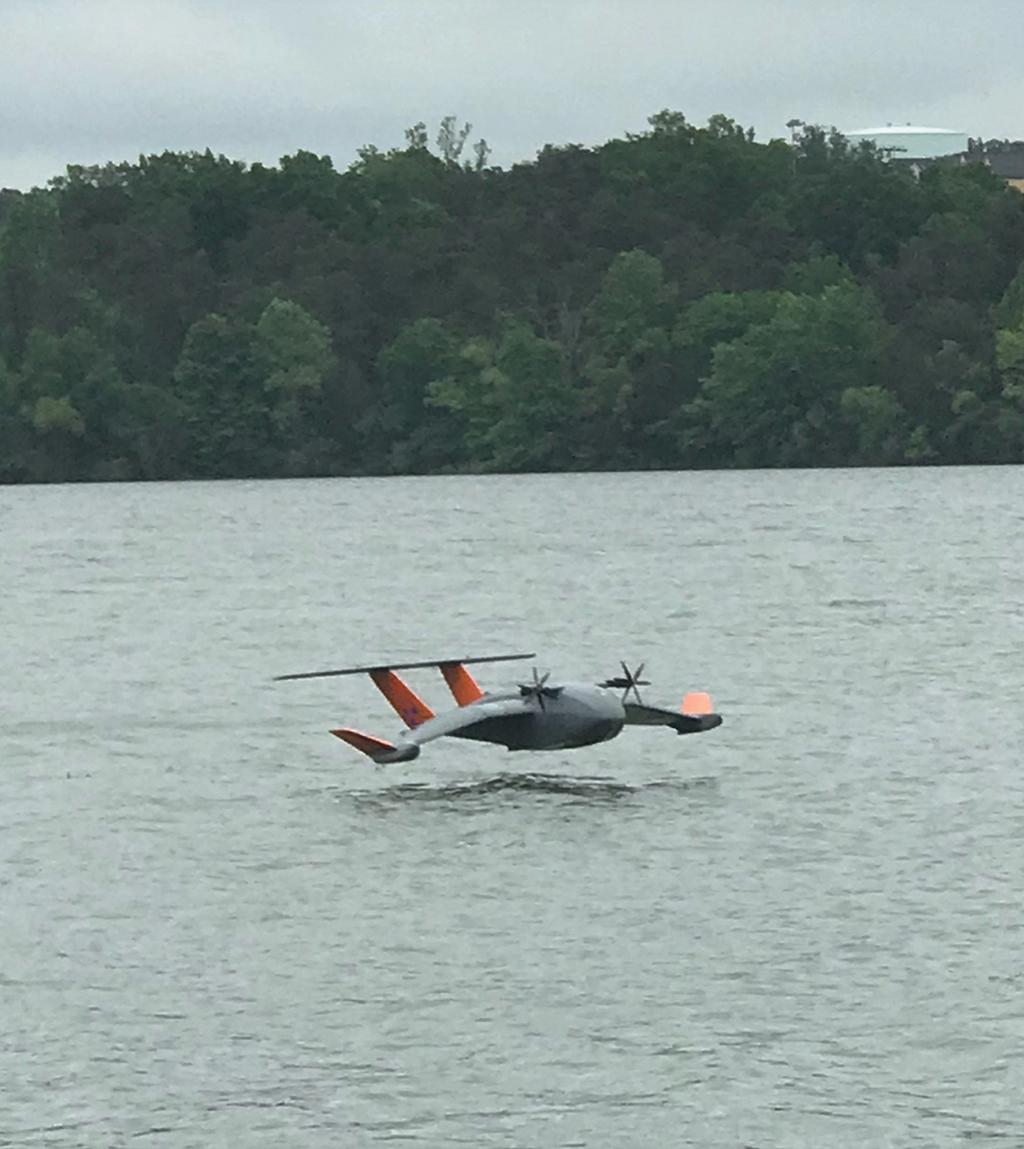
Commercial wing-in-ground-effect startups may be even newer than their advanced air mobility cousins, such as urban air taxis and large UAVs, but they claim to have a fast pass to getting into service before those aircraft. Increasingly, that may mean emerging outside the U.S. first.
Leesburg, Virginia-based Flying Ship Technologies Corp., which says it is three years away from a production ramp-up, is looking abroad for initial operation after finding a combination of foreign potential market interest and faster deployment conditions. And even though the lead regulator to date has been the U.S. Coast Guard, not the FAA, the wing-in-ground-effect (WIG) craft are classified as boats and do not have to meet flight certifications or AS9100 manufacturing stipulations.
- Global logistics market is a lure
- Company aims for rollout in Asia or Europe
“There are several nation states that want us there and that are trying to get us to begin testing,” Flying Ship CEO Bill Peterson told the Aviation Week A&D Manufacturing Conference in May. He said the company expects to make “big” announcements starting in June after Posidonia 2022 ends, the large international shipping conference.
“I would love to develop this quickly here in the U.S. and to deploy it here, but there are other regulations that make it very tough for us to do that,” he said. “So, yes, we’re going international.”
Asked by Aviation Week if the Coast Guard was holding back the company’s rollout by being stretched to approve the WIG vehicles, Peterson responded affirmatively. “They’re just not used to things moving at speed,” he said. “Forty knots to them is very fast. We’re limiting it right now to 100 kt. just to accommodate them because there’s no reason why we can’t go much faster than that.”
Foreign interest is growing. Just after the Aviation Week conference, Flying Ship signed a memorandum of agreement with Spirit World Group, a Greek-based multinational transportation conglomerate with Hong Kong operations, to produce and operate WIG vessels for the Greek and EU markets. Peterson stressed the Greek company’s ability to build, deploy and operate the craft. What is more, the move helps create the vehicles without violation of any U.S. restrictions under International Traffic in Arms Regulations (ITAR).
“Spirit World Group has complete end-to-end manufacturing and logistics transportation capabilities,” Peterson said in a statement announcing the deal. “They have the sophistication to build Flying Ships and ensure safe maritime operations. Now we have the ability to assemble ITAR-free Flying Ships that will be sold around the world.”
Spirit World Group CEO Mike Spiridakos said the deal expands his company’s addressable market to practically every coastline. “Nothing else competes with their combination of cost, speed and efficiency,” Spiridakos added. “In a world where everyone is looking for immediate delivery, this checks the box and does it without greenhouse emissions.”
The Spirit World deal builds on European momentum. Flying Ship last August signed an agreement to integrate autonomous control software jointly developed with Probotek, a European drone software developer. That came after Flying Ship signed a $100 million purchase agreement with a European customer in July, selling an uncrewed hybrid-electric WIG vehicle designed to carry 6,000 lb. more than 1,000 nm.

WIG designs, also known as wingships and ekranoplans, have been investigated for decades because of their ostensible promise of quicker product ramp-up—not to mention faster and more efficient transportation as well as potential military applications. The U.S. military’s pivot to operations in the Western Pacific has revived interest in seaplanes of all types, and last year DARPA issued a request for information to industry.
Peterson says his company can roll out an autonomous product for a quarter of comparable aircraft development cost, operate 10 times faster than ships, emit no greenhouse gases and make tens of thousands of more deliveries. Flying Ship’s initial variant could offer 2,500 lb. of payload, a 300-nm range and travel at 100 kt. or faster.
The company is targeting the $2 trillion global logistics vehicle market, which could expand at a 6% compound annual growth rate through 2027.






Comments